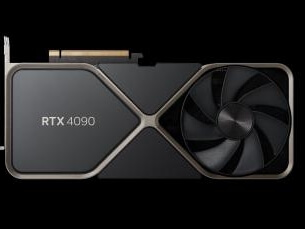1. Introduction to NVIDIA: A Pioneer in GPU Technology
Founded in 1993, NVIDIA has evolved from a small graphics chip manufacturer into a global leader in accelerated computing. Its core innovation—the Graphics Processing Unit (GPU)—has transcended traditional gaming and graphics rendering to become the backbone of modern artificial intelligence, big data analytics, and enterprise-grade computing. Today, NVIDIA dominates the AI accelerator market, with its GPUs powering over 90% of the world’s top AI research institutions and leading enterprises for mission-critical workloads, from training large language models (LLMs) to running real-time data processing systems. For businesses, NVIDIA’s dominance in the GPU market is not just about performance; it’s about compatibility, software ecosystem, and long-term support—key factors that reduce deployment risks and maximize return on investment (ROI).
2. What Are NVIDIA Graphics Cards?
A graphics card or GPU card is hardware that processes and renders visual data. But for enterprises, it’s far more than just a basic “video card.” NVIDIA graphics cards integrate a powerful GPU chip as their core. They also have high-speed memory like HBM3 for data center models. Plus, they come with specialized connectors such as PCIe 5.0. These parts work together to handle parallel computing tasks. CPUs (Central Processing Units) struggle with these tasks. Their sequential design makes parallel work hard for them.
For enterprises, the critical specifications of an NVIDIA graphics card include:
- Compute Power: Measured in TFLOPS (trillions of floating-point operations per second) or TOPS (trillions of operations per second), it determines how fast the card can train AI models or process large datasets.
- Memory Capacity & Bandwidth: Larger memory such as 80GB HBM3 in H100 allows handling bigger large language models like GPT-4 without data offloading, while higher bandwidth such as 3.35TB/s in H200 reduces bottlenecks.
- Software Compatibility: Support for NVIDIA CUDA (a parallel computing platform) and cuDNN (a deep learning library) is non-negotiable, as most enterprise AI frameworks including TensorFlow and PyTorch are optimized for these tools.
3. Key NVIDIA Graphics Card Series for Enterprises
NVIDIA offers tailored graphics card series for different enterprise needs, avoiding one-size-fits-all solutions. Below are the most relevant lines for AI and data-intensive businesses:
3.1 Data Center-Grade GPUs (For Large-Scale AI & Computing)
- NVIDIA H200: The latest flagship for AI training and inference. Equipped with 141GB HBM3e memory with 3.35TB/s bandwidth and 9.6 petaFLOPS of AI compute power, it excels at running ultra-large large language models with 100B+ parameters and generative AI workloads. Its enhanced power efficiency of 350W makes it ideal for enterprise data centers aiming to scale without increasing energy costs.
- NVIDIA H100: A predecessor to the H200, still widely used for high-performance AI. It features 80GB HBM3 memory with 3.3TB/s bandwidth and 6.9 petaFLOPS of AI compute. It’s a reliable choice for enterprises already invested in Hopper-architecture clusters.
- NVIDIA A100: A workhorse for mid-to-large enterprises. With 40GB/80GB HBM2e memory with 1.9TB/s bandwidth and 19.5 TFLOPS of double-precision compute, it balances performance and cost. It’s suitable for general AI training, data analytics, and scientific computing—making it a popular choice for enterprises transitioning to AI-driven operations.
3.2 Professional/Workstation GPUs (For Specialized Enterprise Tasks)
- NVIDIA RTX 4090: Though primarily a consumer-grade GPU, it’s increasingly adopted by small-to-medium enterprises for lightweight AI tasks. With 24GB GDDR6X memory with 1.0TB/s bandwidth and 83 TFLOPS of single-precision compute, it’s cost-effective for testing large language models, running small-scale inference, or powering AI-driven design tools such as 3D modeling for manufacturing.
4. How Enterprises Can Choose the Right NVIDIA Graphics Card
Selecting an NVIDIA graphics card isn’t about picking the “most powerful” model—it’s about aligning the card’s capabilities with your business goals, workloads, and budget. Here’s a step-by-step guide:
Step 1: Define Your Workload Priorities
- AI Training: Prioritize high compute power and large HBM memory. Choose H200 for 100B+ parameter models or H100 for 50-100B parameters. For mid-scale training with 10-50B parameters, the A100 (80GB) offers better cost-efficiency.
- AI Inference: Focus on memory bandwidth and low latency. The H200 or H100 works for high-traffic inference, while the RTX 4090 suffices for small-scale, low-traffic use cases.
- Mixed Workloads: Opt for the A100 (40GB) — it handles both parallel computing for analytics and basic AI tasks without overspending.
Step 2: Consider Scalability & Cluster Needs
Most enterprises don’t use a single GPU—they rely on multi-GPU clusters. Ensure the card supports NVIDIA NVLink, a high-speed interconnect for GPU-to-GPU communication, to avoid bottlenecks. For example, H200 and H100 support NVLink, enabling clusters of 8+ GPUs for large workloads, while the RTX 4090 is better for single-GPU or small clusters with 2-4 cards.
Step 3: Balance Cost & ROI
- Large Enterprises with High AI Demand: Invest in H200/H100 clusters—their performance reduces training time, such as cutting a 2-week large language model training cycle to 5 days, accelerating time-to-market for AI products.
- SMEs or AI Beginners: Start with A100 (40GB) or RTX 4090. They have lower upfront costs and allow testing workflows before scaling up. Avoid overinvesting in top-tier GPUs if your workloads don’t require them.
Step 4: Check Software & Ecosystem Compatibility
Ensure the GPU works with your existing tools. For example, if your team uses PyTorch or TensorFlow, all NVIDIA data center GPUs including H200, H100 and A100 are fully compatible. If you use specialized software such as NVIDIA CUDA-X AI, prioritize newer architectures like Hopper for H200/H100 for optimized performance.
5. WhaleFlux’s NVIDIA Graphics Card-Related Services
For enterprises struggling with GPU resource management, WhaleFlux offers a tailored solution: an intelligent GPU resource management tool designed exclusively for AI enterprises.
Core Capabilities
- Optimize Multi-GPU Cluster Efficiency: WhaleFlux dynamically allocates GPU resources based on workload demands, reducing idle time—a common issue in enterprise clusters—and increasing overall utilization by up to 99.9%. This means enterprises get more value from their existing GPU investments.
- Reduce Cloud Computing Costs: By minimizing resource waste and optimizing on-premises/cloud hybrid deployments, WhaleFlux cuts unnecessary cloud spending—critical for businesses scaling their AI operations.
- Enhance LLM Deployment Speed & Stability: WhaleFlux’s built-in workload scheduling and error-recovery features ensure large language models are deployed faster, reducing time from model training to production, and run with minimal downtime.
Available NVIDIA GPUs
WhaleFlux provides high-performance NVIDIA graphics cards for enterprise AI. These include NVIDIA H100, H200, A100, and RTX 4090. Enterprises can choose to purchase these GPUs outright or rent them. The rental policy is flexible with no hourly rental options. This avoids unpredictable costs for businesses. The minimum rental period is one month. It’s ideal for businesses needing stable, long-term GPU access. And it doesn’t require short-term commitments from them.
6. Conclusion
NVIDIA graphics cards are the foundation of modern enterprise AI and HPC. They offer a range of models to fit every business size and workload. For enterprises, choosing the right card needs aligning performance with needs. It also requires balancing cost with ROI and ensuring scalability. WhaleFlux complements this by turning raw GPU power into efficient operations. It helps businesses unlock the full potential of NVIDIA’s technology cost-effectively. Large enterprises may use these to train ultra-large language models. SMEs might test AI tools with NVIDIA’s GPUs too. The combination of NVIDIA’s GPUs and WhaleFlux’s management solution is reliable. It provides a future-proof path to AI success for all businesses.

